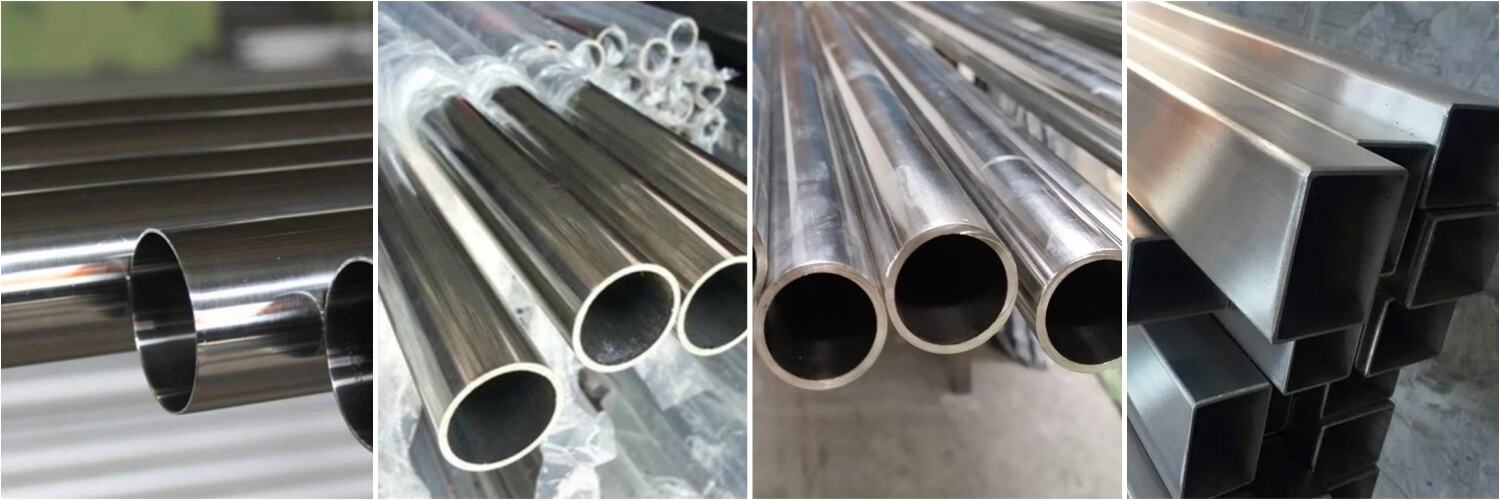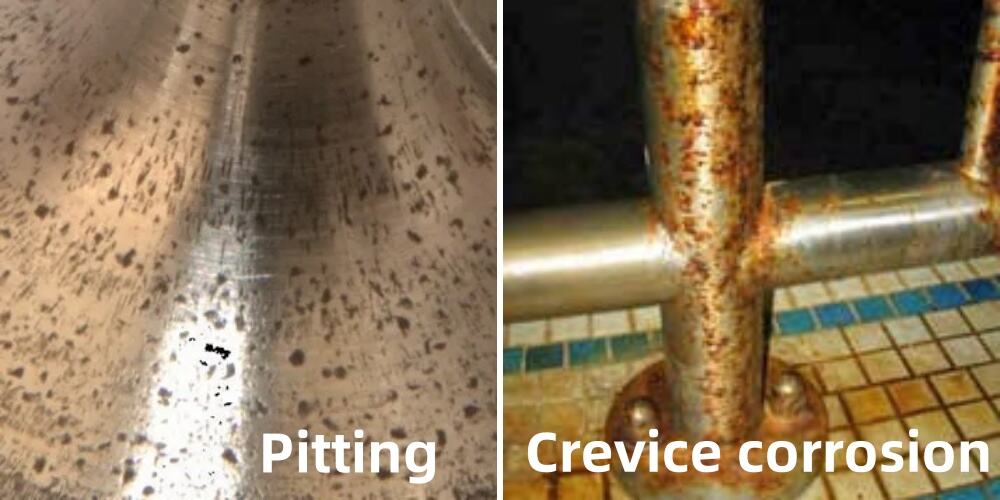304 stainless steel is the most common and widely used material. It is widely used in many fields such as home, industry and medical with good corrosion resistance, mechanical properties and machinability. Many people have a misunderstanding about the term "stainless steel" and think that it "never rusts". However, 304 stainless steel is not completely free from rust in any environment. Under certain conditions, 304 stainless steel may also corrode and rust.
This article will comprehensively explore whether 304 stainless steel will rust and the various factors that cause it to rust, so as to help everyone correctly understand the essential characteristics of stainless steel and make more scientific choices in terms of use and maintenance.
What Is 304 Stainless Steel?
304 stainless steel is an austenitic stainless steel with 18% chromium and 8% nickel as the main components. This ratio gives it excellent corrosion resistance and oxidation resistance. It has moderate mechanical strength, good plasticity and toughness, strong weldability and good machinability. It is widely used in food processing, kitchen equipment, architectural decoration, medical equipment, chemical containers and other fields. Chromium forms a dense oxide film in steel, namely the passivation film, which is the fundamental reason why 304 stainless steel is not easy to rust. However, this protective film is not permanently stable and will be affected by the external environment.

What Are The Main Factors That Cause 304 Stainless Steel To Rust?
Although 304 stainless steel has good corrosion resistance, it does not rust in all environments. The main factors affecting its corrosion resistance include environmental conditions, surface conditions, mechanical damage, pollution sources, ec.
- High humidity or humid environment is an important factor causing 304 stainless steel to rust. When the moisture concentration in the air is high, it will accelerate the reaction process between oxygen and the metal surface, especially in areas without ventilation or water accumulation.
- Chloride ion-containing environments are extremely unfavorable to 304 stainless steel, such as seawater, salt spray, high-chloride tap water, detergent residues, etc. Chloride ions will destroy the passivation film and form local corrosion points.
- Surface contaminants such as iron filings, welding slag, grease, dust, etc., if not cleaned in time, will form galvanic corrosion on the surface and promote rust.
- Mechanical damage such as scratches and impacts destroys the integrity of the passivation film, exposing the stainless steel surface to air and corrosive media, making it easy to rust.
What Are The Forms Of Rusting Of 304 Stainless Steel?
The rusting of 304 stainless steel does not occur uniformly, but is a local or specific form of corrosion. Common forms of rust are:
- Pitting: This is the most common form of corrosion, usually caused by chloride ions. Small corrosion points will form on the surface and penetrate into the metal.
- Crevice corrosion: It occurs in places where there are gaps in stainless steel bolts and interfaces. Water and impurities breed corrosive substances in the gaps and form an acidic microenvironment.
- Intergranular corrosion: It often occurs in high-temperature heating or welding areas. The precipitation of chromium carbide causes the grain boundary to be chromium-poor and loses its protective ability.
- Stress corrosion cracking: Under the combined action of tensile stress and corrosive media, the material cracks and eventually breaks.

Common Cases Of Rusting Of 304 Stainless Steel
1. The kitchen sink and faucet in the home have brown spots due to long-term contact with salt, soy sauce, water vapor and other substances, which manifest as pitting.
2. Balcony guardrails or air conditioning racks in coastal cities, due to salt spray environment and wind and rain, even 304 materials will rust in a short time.
3. The 304 pipes in the food factory are cleaned with chlorine-containing detergents. Due to the failure to rinse the residual liquid in time, the pipes are corroded and perforated.
4. The 304 stainless steel handrails around the swimming pool are exposed to chlorine-containing pool water and detergents, and rust and structural degradation will occur within a few years.
Measures To Prevent 304 Stainless Steel From Rusting
In order to delay the rust process of 304 stainless steel to the maximum extent, the following measures can be taken:
- Reasonable material selection: For occasions where there are a large number of chloride ions or corrosive media in the environment, 316, 316L or duplex stainless steel with stronger corrosion resistance should be selected.
- Surface treatment: The surface is treated by electropolishing, pickling passivation, spraying anti-corrosion coating, etc. to improve its corrosion resistance.
- Cleaning and maintenance: Clean the stainless steel surface regularly to remove oil, dust and corrosive substances, and keep the surface clean and dry.
- Avoid cross contamination: prevent contact with carbon steel, iron filings, etc., especially in the process of transportation, processing, and welding, pay attention to isolation.
- Reasonable design of structure: reduce gaps and water accumulation points, optimize drainage and ventilation, and avoid the formation of local corrosion environment.
Corrosion Resistance: 304 Stainless Steel Vs. Other Stainless Steels
Although 304 stainless steel has a high cost performance, it is not the best in corrosion resistance. 316 stainless steel adds 2~3% molybdenum on the basis of 304, which greatly improves the resistance to chloride ion corrosion and is suitable for marine and chemical environments. The low-carbon version of 316L is more suitable for welded structures and can effectively prevent intergranular corrosion. Duplex stainless steel such as 2205 combines austenite and ferrite structures, and has stronger resistance to stress corrosion cracking.
Therefore, in extreme or special environments, higher-grade stainless steel materials should be selected according to actual use conditions.
Treatment Methods For Rusted 304 Stainless Steel
If 304 stainless steel has rust spots or slight corrosion, the treatment methods include:
- Use professional stainless steel cleaner or rust removal paste for local wiping;
- Use fine sandpaper, nylon cloth, etc. to gently polish and remove rust;
- Pickling + passivation treatment to rebuild the passivation film;
- In case of severe corrosion, parts need to be replaced and the cause of corrosion should be found to prevent recurrence.
After treatment, daily maintenance should be strengthened to prevent rust again.
Conclusion:
There is actually no absolute answer to the question of whether 304 stainless steel will rust. The correct statement is: "Under appropriate conditions, 304 stainless steel is not easy to rust; but under certain corrosion conditions, 304 stainless steel may also rust."
Therefore, scientific material selection, correct use, and reasonable maintenance can truly give play to the "corrosion resistance" advantage of 304 stainless steel.
We are a professional steel manufacturer. If you have any needs, you can contact us at any time!
 +86 17611015797 (WhatsApp )
+86 17611015797 (WhatsApp )  info@steelgroups.com
info@steelgroups.com
